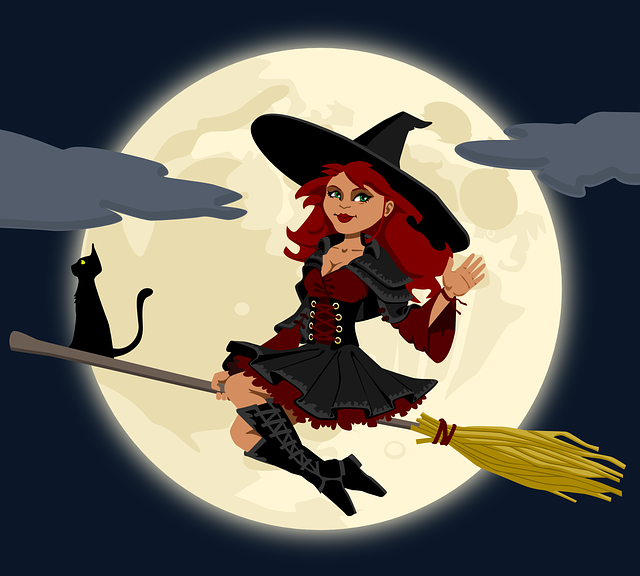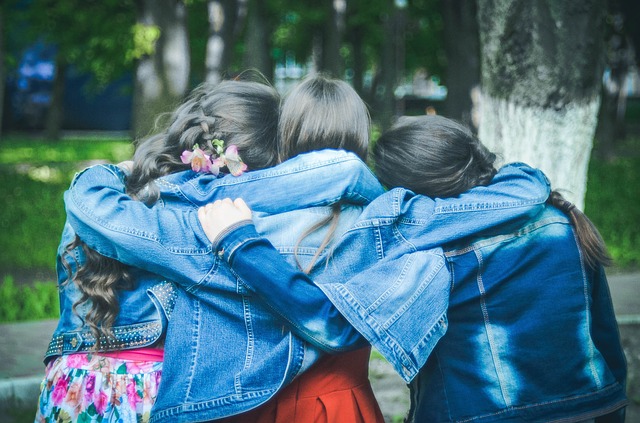In the run up to Halloween, we are proud to publish this fantastic piece co-authored by Professor Jessica Ringrose, Emilie Lawrence, Hanna Retallack and Siri Lindholm which challenges the inherent sexism apparent in the costume choices open to young girls and women and the complex set of unwritten rules surrounding their behaviour during this holiday.
“In the regular world, Halloween is when children dress up and beg for candy. In girl world, Halloween is the one night of the year when a girl can dress like a total slut and no other girls can say anything about it,” explains Lindsay Lohan in the 2004 cult teen movie, Mean Girls. This statement is testament to the existence of a set of complex unwritten rules that girls must navigate and negotiate with on a daily basis, to avoid being shamed by adults and peers.

Even small children aren’t immune from these pressures; the tweet quoted in the headline asks us ‘has Halloween become slutoween even for toddlers?’ Whilst the tweet poses ‘toddlers’ as the subject of debate it is immediately clear that it is girls we are dealing with here. There is no mention of young boys looking like sluts or skanks on Halloween; instead we are told to question why toddler girls are dressed up as cops and cats – opening up dialogue about their bodies and the ‘wrong’ choices being made – before they are even aware of the minefield ahead. We are subjecting these toddlers to scrutiny and failing them before they’ve even had a chance to understand the rules of the game.
The lead up to Halloween is a good time for parents, schools and young people to think more closely about debates over girls’ sexualised dress. Sexualisation is fast becoming a key aspect of protection and safe-guarding in social welfare and schooling. Some psychological research is claiming a direct causal link, with the implication that sexualised dress leads to psychological and social harm in girlhood (Zurbriggen and Roberts, 2012). In fact so powerful is the force of sexualisation said to be, that it is credited with causing anything from self-harm to human trafficking.
Critical sociological and feminist educational research suggests, however that it’s more complex. Positioning girls’ bodies as inherently suggestive or sexual can actually place them atmore risk and perpetuate a cycle of victim blaming that has long been common in public responses to rape and sexual assault. When schools participate in or fail to challenge what has been called ‘slut shaming’ they are perpetuating gender based inequality (Dobson and Ringrose, 2015). Education, starting at primary ages, needs to target the wider culture of sexism that promotes sexual objectification and violence against girls and women. Directing attention to the wider cultural values around (hetero)sexuality and sexual double standards, particularly masculinity and boys’ and men’s attitudes towards girls and women is also crucial.
Teenage girls face particular pressure and surveillance regarding their clothing ‘choices’. Halloween is a tense time. Girls are offered a dressed-up version of the same decisions they face every day: will they be a ‘sexy kitten’ ready to be objectified? Or the un-(hetero)sexy un-desirable witch? Girls often talk about extreme pressures, saying “you can’t win” when describing the minefield of both formal and informal rules that face them.
Issues of sexualised dress have had recent wide-spread media attention as young people have challenged school uniform dress codes as sexist, claiming they unfairly target girls’ clothes and bodies. The historical measurement and control over girls’ school uniform skirts have been joined by new debates over whether girls ought to wear trousers to avoid being a ‘distraction’ to male teachers and students
With occasions like Halloween, what constitutes ‘skanky’ fancy dress is vague and the social rules can be impossible to interpret correctly. Expressions such as ‘slutoween’ and ‘skankoween’ do not help on the path to a happier girlhood. There is a sexual double standard embedded in the term ‘slut’, with girls or women deemed bad and shameful through their dress, which is read as branding them sexually aware or active. Skank, slag, ho and slut are class-based labels also – they tell some girls that their tastes are poor, their behaviour wrong and that they are ultimately at fault for having made the wrong ‘choices’.
So this Halloween let’s look at the facts of sexism facing UK girls. The recently released 2015 Girls Attitudes Survey, a nation-wide survey that canvassed the views of 1,574 girls and young women from 7 to 21, found that three quarters of girls aged 11 to 21 (75%) report anxiety about experiencing sexual harassment that in turn affects what they choose to wear, where they go and how they feel about their bodies. Clear damage to girls’ wellbeing is evident. Almost half (46%) were found to have personally needed help with their mental health. A commodifying and sexualising consumer culture provides such conflicting messages around sexual appearance, which is seen as linked to sexual conduct. This causal link is the root of ‘rape culture’ myths of victim blaming that encourages girls to blame themselves when something goes wrong (Mendes, 2015).
One of the key issues here is the way in which adults engage with girls about their mental health and its link to ‘sexualisation’ and sexuality. According to the Girl Guiding Survey, girls feel adults are out of touch with the new threats to their wellbeing, ‘leaving them struggling to find the adequate support and information they need to remain resilient in the face of increasing pressures’ with 82 per cent of girls aged 11 to 21 saying adults don’t recognise the pressure they are under.
Projects such as Gender Equalities Leadership in Schools (GELS), led by researchers at the UCL IOE, connect up organisations like the Gender and Education Association and UK Feminista, who are working to tackle sexism in schools. GELS supports school-based activities such as feminist lunch and after-school clubs that provide young people with safe spaces in which to discuss conflicting messages and pressures around gender and sexuality. GELS is helping girls and boys with tools of critical thinking necessary to engage with dominant media texts on womanhood and ‘appropriate’ femininity and masculinity, as well as the chance to realise that the complexities they face are not only personal, but political. Watch this space for updates.




